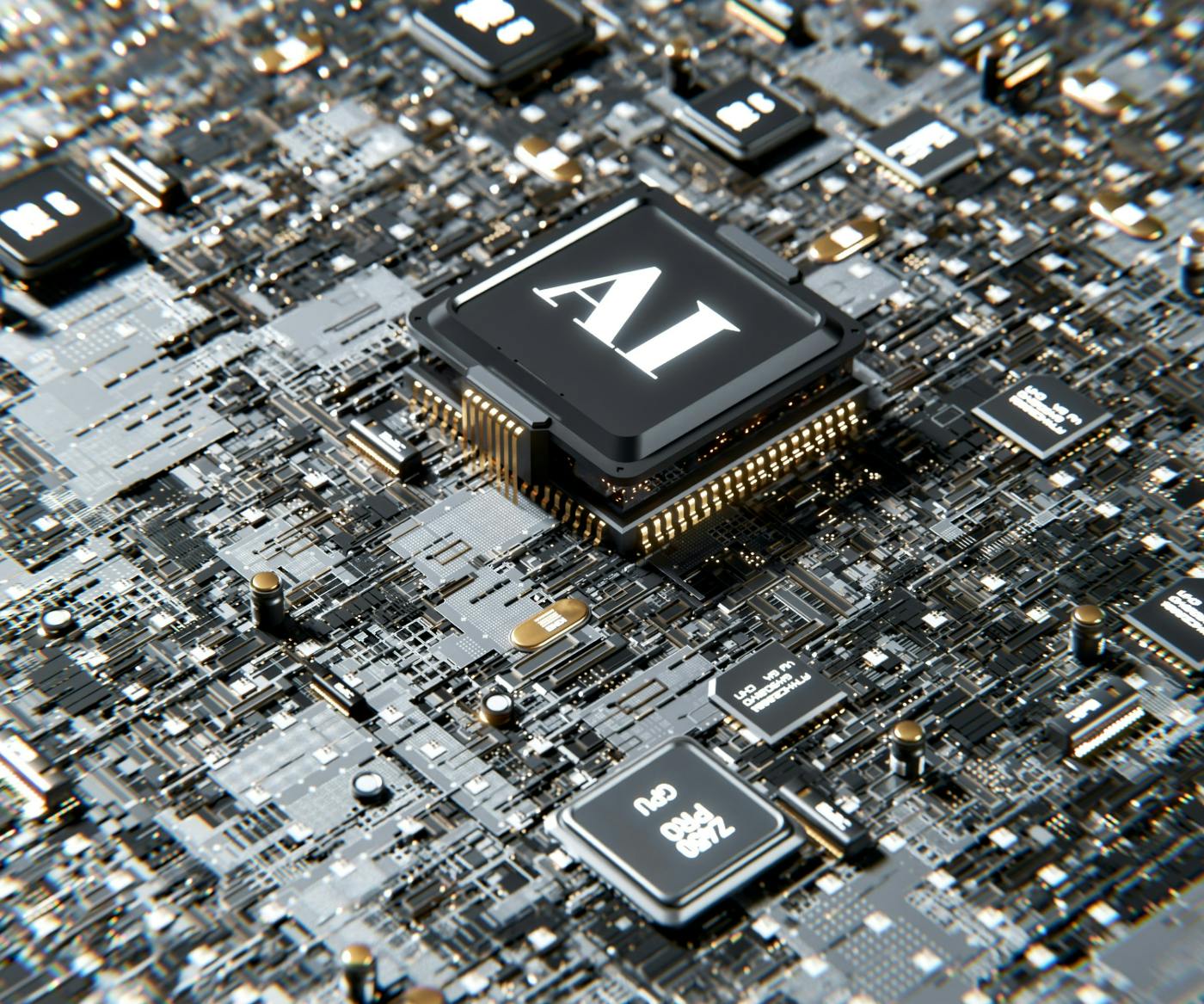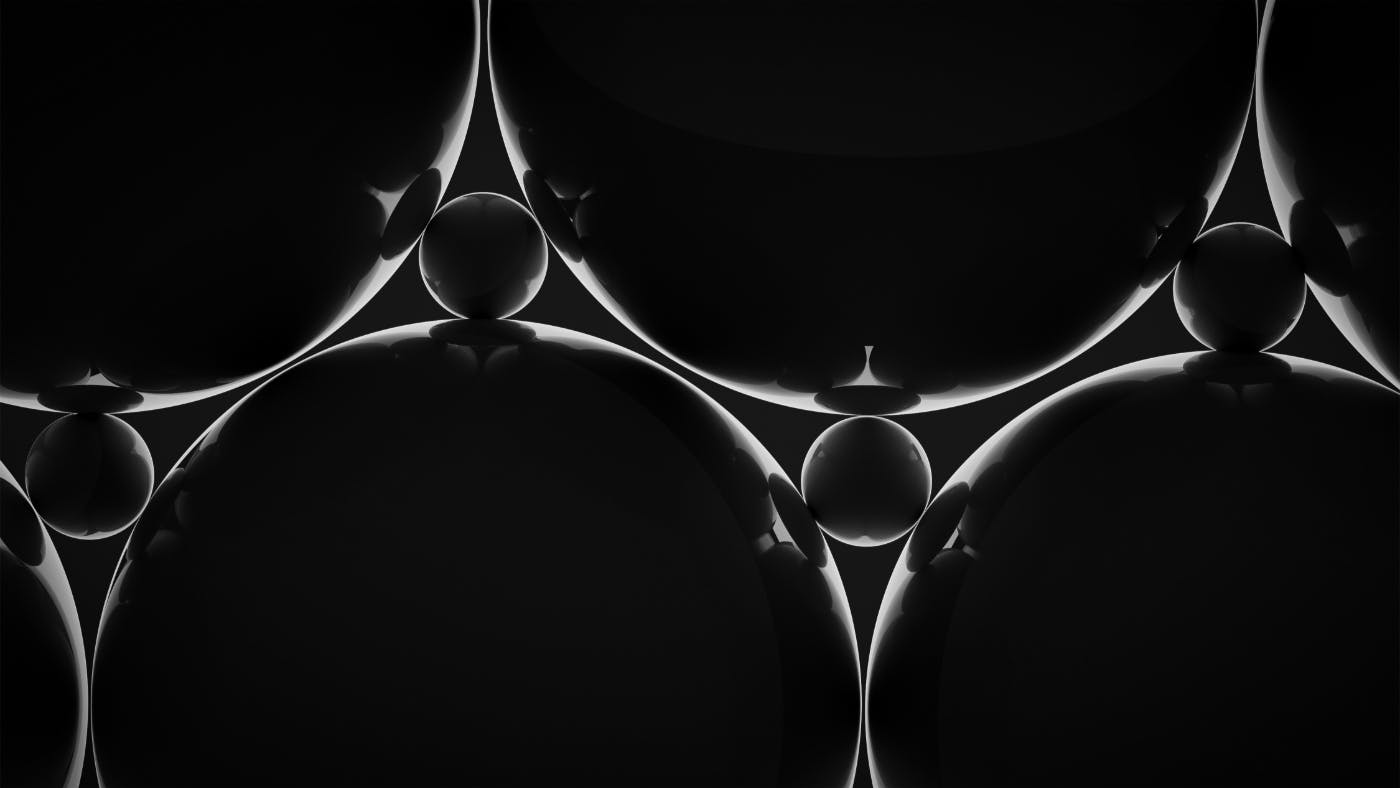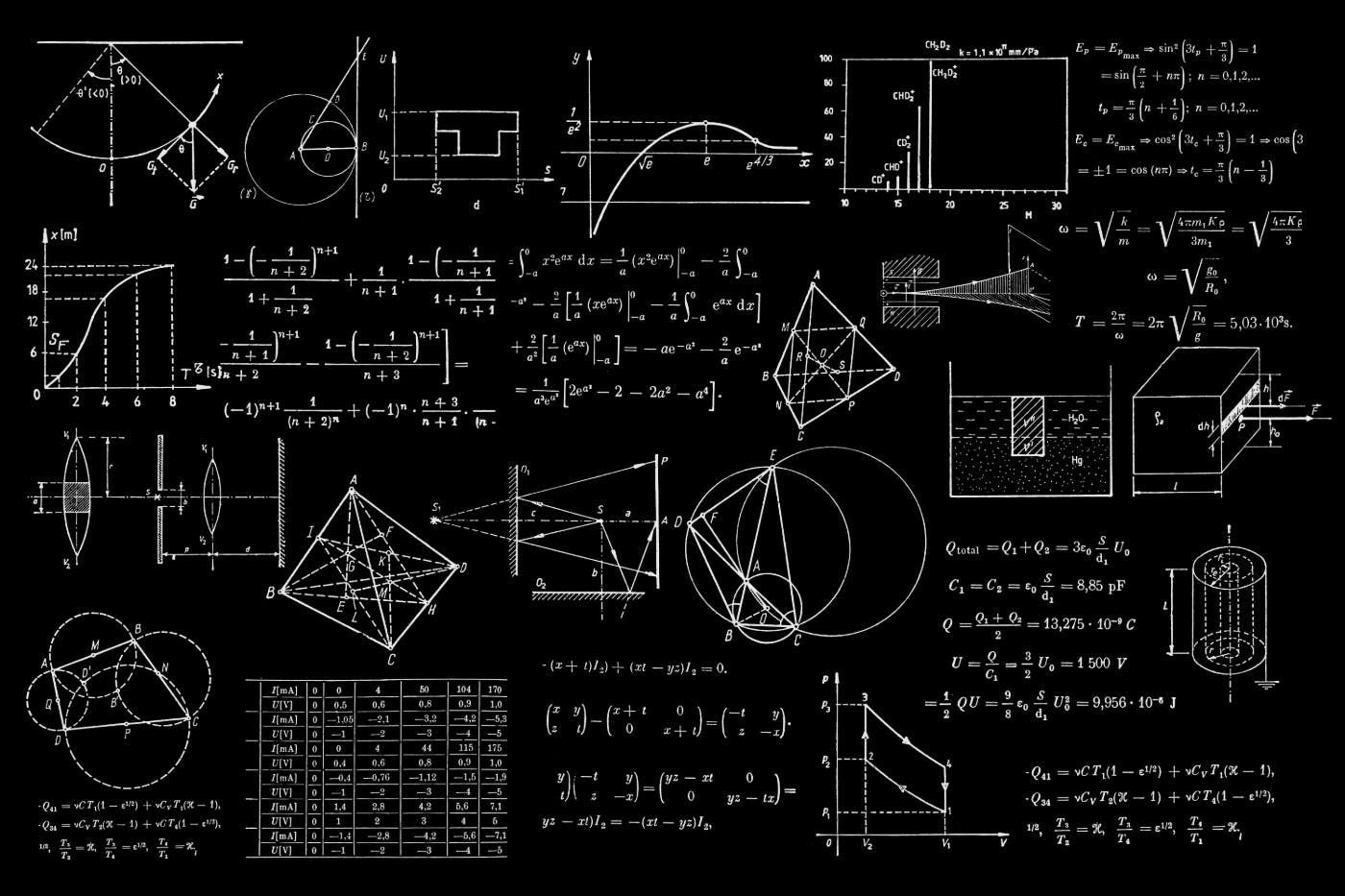
Alright, before we get started, a quick note: I’m not a quantum physicist, nor am I an expert in quantum computing (that’s an understatement). But I’ve become so fascinated by this topic that I’ve decided to dive deep into it—and I’m inviting you along for the ride.
Let’s face it: I’m not very bright.
I’m not being self-effacing; it’s just a simple fact: I’m not very bright. However, what I lack in intellectual prowess, I more than make up for in curiosity. Many times, I have stared at a newspaper or read an article online and thought, "What the hell is that?" The question then leads me down a variety of rabbit holes, which often end with a really great recipe for no-bake tarts or a solid BBQ dry rub. The topic that sent me down this particular rabbit hole? Dropped long ago.
Recently, I saw an article about quantum computing. I thought, Wow, quantum computing... that … that sounds... Hey, crispy chicken wing recipe—I hate soft, mushy chicken wings. After making the wings, I brought my sauce-stained fingers back to the computer and started my search. Turns out, quantum computing isn’t just the future; it’s happening right now. Well, maybe not in your back pocket just yet, but it's definitely on the rise. For reasons I can’t fully explain, this topic has lodged itself in my brain so firmly that I’ve decided to write a five-part series about it. Why? Lord knows. I’m sure my brain will melt and drip out of my ears halfway through, but still, I’m going to try, dear readers. I’m going to try.
Alright, before we get started, a quick note: I’m not a quantum physicist, nor am I an expert in quantum computing (that’s an understatement). But I’ve become so fascinated by this topic that I’ve decided to dive deep into it—and I’m inviting you along for the ride. This will be a five-part series where we explore everything from the basic principles of quantum computing to how it might change the future of web design. We’ll go slow, and we’ll keep things light because I’m learning alongside you. By the end of this series, we’ll have a better understanding of how this cutting-edge technology could impact your work in web development, security, and UX design.

A Brief History of Quantum Mechanics (and Why You Should Care)
Okay, before we dive headfirst into quantum computing, let’s take a quick pit stop in the past. You see, quantum computing doesn’t just magically pop up out of nowhere. It’s the result of over a century of mind-bending scientific discoveries. So, let’s rewind a bit and take a very quick look at quantum mechanics—the field that gave rise to quantum computing.
In the early 1900s, a bunch of really smart people started poking around with atoms and light. They discovered some pretty weird stuff—like particles that seemed to act like both particles and waves at the same time. One of the first to notice these strange behaviors was Albert Einstein (yes, that Einstein). He proposed the idea of quantized light, meaning light could be thought of as both a wave and a particle.
Then came folks like Niels Bohr and Werner Heisenberg, who started to unravel the weirdness of quantum mechanics—things like superposition (where something can be in two states at once) and entanglement (where particles can be linked, no matter how far apart they are). These concepts were groundbreaking... and, let’s be honest, more than a little confusing.
Fast-forward to today, and here we are, on the cusp of seeing all this quantum weirdness applied to computing. It’s like the brainchild of decades of crazy theories suddenly getting a job to make our technology smarter, faster, and more powerful than we ever thought possible.
And that, dear readers, is where quantum computing comes in.
What is Quantum Computing?
Now that we've got a little history under our belts, let's get back to the present and start talking about quantum computing itself. Here’s where things start to get interesting, and also a little confusing. But don't worry, we’ll keep it light.
Quantum computing is a new kind of computing that uses the principles of quantum mechanics to solve problems in ways that traditional computers just can’t. But before you start thinking about flying cars and robot butlers, let's break this down.
Think of a regular computer like a really smart office worker. This worker handles all sorts of tasks—emails, spreadsheets, documents—using bits. A bit is the smallest piece of information a computer can understand, and it can either be a 0 or a 1, like flipping a light switch on or off.
Now, quantum computing throws a wrench into that. Instead of using bits, quantum computers use quantum bits, or qubits. And these qubits are where the magic happens.
A qubit can be both 0 and 1 at the same time. Yes, you read that right. It's like if you could flip a coin and have it land on both heads and tails at once. This ability to exist in multiple states at once is called superposition.
Superposition allows quantum computers to perform many calculations simultaneously, making them incredibly powerful for solving complex problems that would take traditional computers centuries to finish.

How Quantum Computing Works
Now that we have a basic understanding of what quantum computing is, let’s dive into how it works—at least in simple terms. Don't worry, I’m not going to start talking about wave functions or quantum field theory. Instead, we'll focus on a couple of key ideas that make quantum computing different from the computers we use every day.
Quantum computing is like nothing you’ve encountered in the world of traditional computers. To better understand it, let’s break it down into a couple more key concepts: superposition and entanglement. These are the bedrock principles that give quantum computing its power.
- Superposition: We touched on this earlier, but let’s go a little deeper. Imagine a traditional computer bit is like a coin lying flat on a table. It’s either heads or tails, and that’s it. But with superposition, the quantum bit (or qubit) is like a coin spinning in the air. It’s not heads or tails—it’s both. In fact, it’s a probability cloud that could be anywhere between heads and tails, or even a combination of the two. This means a quantum computer can store and process a vast amount of data in parallel, exponentially increasing its ability to solve problems.
For example, when you try to solve a problem using a classical computer, it’s like having a very methodical person going through a list of options one by one. A quantum computer, on the other hand, can look at many possibilities simultaneously, which makes it incredibly powerful for solving complex problems like optimizing routes in transportation or predicting the behavior of particles in chemistry.
- Entanglement: This one is even weirder. Entanglement occurs when two qubits are linked in such a way that their states are interconnected, no matter how far apart they are. This means that the state of one qubit instantly influences the state of the other, even if they’re separated by vast distances.
Let’s think of it like this: you have two gloves, one for the left hand and one for the right. If you put one glove in a box in New York and the other in a box in Tokyo, it would take a physical trip to the box in Tokyo to know whether you’re holding the left or right glove. But with quantum entanglement, when you open the box in New York and look at the left glove, you instantly know the one in Tokyo is the right glove, no matter the distance. This kind of instant communication is mind-blowing and can lead to breakthroughs in everything from data transmission to computing power.
Quantum vs. Classical Computing: What’s the Big Difference?
Now that we’ve covered the basics of quantum computing, let’s take a deeper dive into how it compares with classical computing. It’s not about one replacing the other, but about their complementary strengths.
- Classical Computing: When you use a traditional computer, everything you do relies on bits. These bits are the building blocks of all your data—whether you’re watching a movie, checking emails, or browsing a website. Each bit can only be in one of two states—0 or 1. This binary language is what allows computers to do everything they do.
However, classical computers can be limited by how much information they can process at once. Let’s say you have a complicated problem, like figuring out the best route for hundreds of delivery trucks in a city. A classical computer would have to calculate each possibility one by one, which takes a lot of time and computing power.
- Quantum Computing: Now, let’s compare that to a quantum computer. As we’ve learned, quantum computers use qubits, and because qubits can exist in multiple states simultaneously, they can evaluate all possible solutions to a problem at once. This means quantum computers can tackle problems that are out of reach for classical machines. They can process vast amounts of data simultaneously, which is ideal for certain tasks—like breaking encryption codes or simulating molecular structures for drug discovery—that require more power than traditional computers can handle.
The biggest takeaway here is that quantum computing doesn’t replace classical computing. Instead, it will complement it. Think of quantum computing as a supercharger for specific tasks, while classical computers will continue to handle the everyday stuff, like word processing, browsing the web, and streaming videos.

Why It Matters for Web Design
Now that we have a clearer understanding of what quantum computing is and how it works, let’s focus on why it matters for web design. You might be thinking, I’m just building websites, why should I care about quantum computing? But the reality is that quantum computing is already on the horizon, and it’s going to affect more than just scientists or tech nerds in lab coats. It will impact digital security, web performance, and even user experience (UX)—areas that are central to what we do as web designers.
Digital Security: A Quantum Threat
One of the most pressing concerns about the rise of quantum computing is how it will impact the security of our websites and online systems. Traditional encryption methods that protect everything from personal data to financial transactions rely on the complexity of mathematical problems that are tough for classical computers to solve. These methods, like RSA encryption, work by using the difficulty of factoring large numbers as a security measure. For example, breaking down a number like 15,749,437 into its prime factors would take a very long time for a classical computer.
However, quantum computers can do this much faster. Thanks to Shor’s algorithm (which is named after the scientist who discovered it), a quantum computer could easily break RSA encryption by solving these mathematical problems at a mind-boggling speed. In fact, a sufficiently powerful quantum computer could potentially decrypt encrypted data in seconds, rendering current encryption methods obsolete.
For web developers and businesses, this is a big deal. Websites today rely on encryption to keep sensitive information safe from hackers. If quantum computers are able to crack encryption, everything from credit card numbers to social security details could be at risk. To address this, researchers are working on quantum-safe encryption, a new type of encryption designed to be secure even against the power of quantum computing. This means that as web designers and developers, we’ll eventually need to start thinking about how to integrate these new encryption methods into our websites to protect users.
Web Performance: Supercharged Speed
On the flip side, quantum computing holds incredible potential to improve web performance. Right now, we use classical computers to run algorithms that manage everything from data processing to server-side calculations. These algorithms work well for many tasks, but as web applications get more complex, they can start to slow down. This is particularly true for operations like large-scale data analysis or real-time recommendation engines.
Quantum computers could help speed up these tasks by processing data in parallel, thanks to superposition. This means that instead of running through all the options one at a time, a quantum computer can explore multiple possibilities at once. For example, if you were designing a website that uses real-time personalized recommendations based on user behavior, quantum computing could analyze huge amounts of data in a fraction of the time it takes a classical computer to process it. The result? Faster, more responsive websites with better, more personalized user experiences.
This could also help improve server-side performance. Quantum algorithms could optimize the way servers manage requests, improving efficiency and cutting down on response times. This means that users will experience faster page loads and a more seamless browsing experience, which is crucial in today’s digital world.
A More Complex User Experience (UX)
Quantum computing doesn’t just have implications for security and performance—it could also influence how we design and interact with websites. As quantum computing advances, the sheer computational power it offers could make it possible to create more complex, dynamic, and intelligent user experiences. Imagine websites that can analyze vast amounts of user data in real time, adapting to individual needs and preferences instantly. For example, if you were designing a recommendation engine, quantum computing could allow it to analyze a person’s behavior and predict what they want in an instant, with an accuracy far beyond what we can achieve with classical computing.
Quantum algorithms could also enable better decision-making processes for complex tasks. Websites could act like intelligent assistants, predicting what users want before they even know it. This could lead to websites that feel more intuitive, personalized, and responsive.
As web designers, this opens up a whole new world of possibilities. However, it also brings new challenges—how do we design for something so powerful? How do we ensure that the user experience remains seamless and accessible, even as the underlying technology becomes increasingly complex?
Summing Up
And there you have it—a crash course on the basics of quantum computing. We’ve only just scratched the surface, but don’t worry; there’s much more to come. In the next part of the series, we’ll dive into the world of quantum cryptography and what it means for the security of the web. Spoiler alert: you might want to start thinking about how to future-proof your websites. Trust me, this is just the beginning. Stay tuned!

